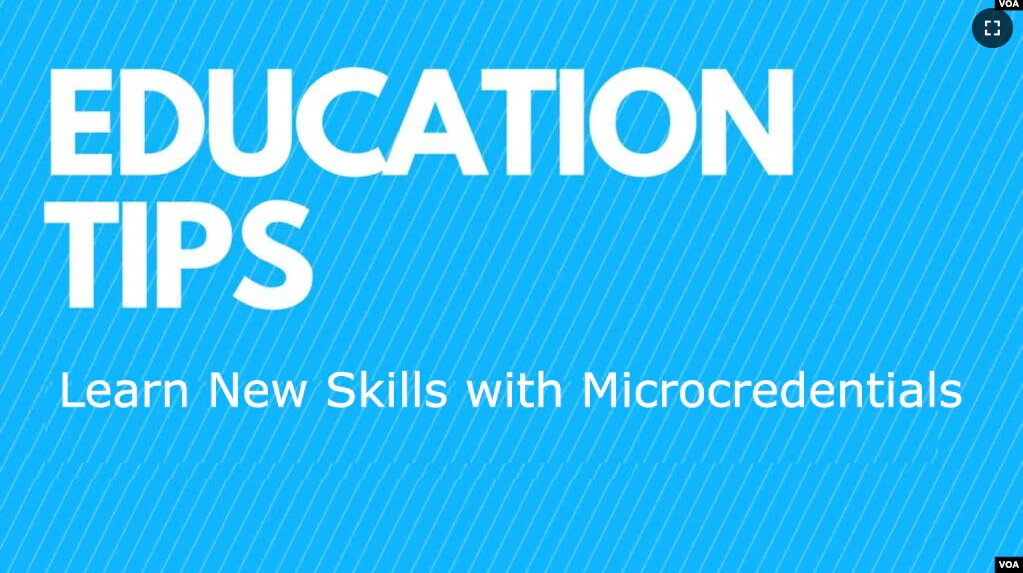In today’s workplace, what you learned in the usual college courses may not be very useful later in life.
For example, in the field of information technology, workers might never use BASIC, the computer language that was taught in the 1990s. But they might need to know Python or SQL.
The answer for students or workers is a professional certificate program, or what is called microcredential.
What is microcredential?
UNESCO, the world’s education agency, defines microcredential as professional certification that centers on a set of learning outcomes in a narrow field. It is completed over a shorter time than a traditional university program, from a week to a month.
The most popular fields in which microcredentials appear are data analytics, information technology support and cybersecurity. The courses are often developed by technology businesses like Google, Salesforce, Meta, Intuit and IBM. The businesses provide a certificate when a student finishes the course.
Coursera, an online educational service, recently released a report on how microcredentials are preparing students for jobs and affecting higher education schools. It says that 51 percent of colleges in the United States that offer microcredentials also provide school credit and more plan to do so in the next few years.
Some colleges include one or more courses leading to microcredentials as part of their usual programs. At Hawaii Pacific University, school leaders say including professional certifications in its business program has sharply increased the number of interested students.
How to find the right microcredential?
For students, Credential Finder offers a way to search for the right microcredential offerings by field of study or industry.
For example, if you are studying information science, you may take Google Data Analytics or an IBM Data Analyst course. If you are working toward a degree in business administration, you may take a Google Project Management course. Your university program’s advisors should be helpful in identifying the best certificate programs for your area of study.
Be sure to check with your country’s government for more information on special training programs. One example is Ukraine, which is aiming to meet its shortage of skilled workers with its ReSkill UA initiative. It provides help with finding training and employment.
How much do microcredentials cost?
Many of the course providers permit learners to use the materials for free, but to earn a certification, payment is required.
Coursera has a monthly fee of $59 or a yearly fee of $399 for its Coursera Plus membership. For courses that universities offer for credit, the payment will depend on the price set by the school.
The languages available in Coursera are English, German, Spanish, French, Russian and Portuguese (Brazilian). Other available languages include Japanese, Korean, Chinese (traditional and simplified) and Arabic.
The online education service also provides automatic translation of course materials in Swedish, Greek, Polish, Bahasa Indonesian, Italian, Turkish, Thai and Kazakh.
I’m John Russell.
Jill Robbins wrote this story for Learning English using materials from Coursera, UNESCO and university sources.
____________________________________________
Words in This Story
course – n. a series of classes about a particular subject in a school
certification – n. official approval to do something professionally or legally
analytic – adj. of or relating to the careful study of something; of or relating to analysis of something
cybersecurity – n. the state of being protected against the criminal or unauthorized use of electronic data, or the measures taken to achieve this
automatic – adj. of a machine or device. having controls that allow something to work or happen without being directly controlled by a person
